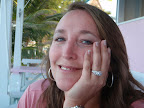Composite Application Guidance for WPF and Silverlight V2 February 2009 is Available
Microsoft has released the Composite Application Guidance for WPF and Silverlight V2 February 2009.
Brief Description (from download site)
The Composite Application Guidance for WPF and Silverlight is designed to help you more easily build enterprise-level Windows Presentation Foundation (WPF) and Silverlight client applications. This guidance will help you design and build flexible composite client applications.
Overview (from download site)
The Composite Application Guidance for WPF and Silverlight is designed to help you more easily build enterprise-level Windows Presentation Foundation (WPF) and Silverlight client applications. It will help you design and build enterprise-level composite WPF client applications—composite applications use loosely coupled, independently evolvable pieces that work together in the overall application.
The guidance includes a reference implementation, reusable library code (named the Composite Application Library), documentation, QuickStart tutorials, and hands-on labs.
This version of the Composite Application Guidance is designed to help you build WPF and Silverlight applications that have a single code base.
Get it here.
Brief Description (from download site)
The Composite Application Guidance for WPF and Silverlight is designed to help you more easily build enterprise-level Windows Presentation Foundation (WPF) and Silverlight client applications. This guidance will help you design and build flexible composite client applications.
Overview (from download site)
The Composite Application Guidance for WPF and Silverlight is designed to help you more easily build enterprise-level Windows Presentation Foundation (WPF) and Silverlight client applications. It will help you design and build enterprise-level composite WPF client applications—composite applications use loosely coupled, independently evolvable pieces that work together in the overall application.
The guidance includes a reference implementation, reusable library code (named the Composite Application Library), documentation, QuickStart tutorials, and hands-on labs.
This version of the Composite Application Guidance is designed to help you build WPF and Silverlight applications that have a single code base.
Get it here.
















